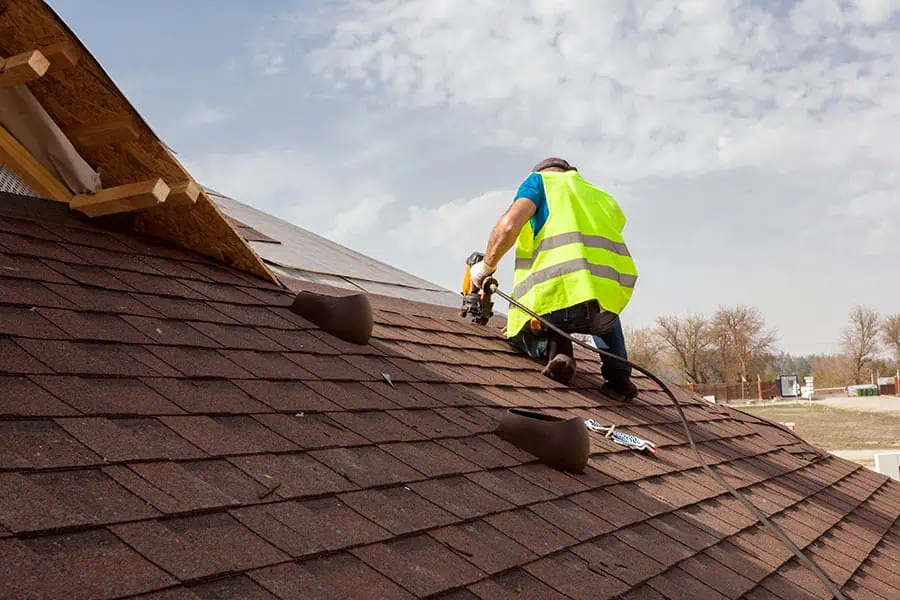Residential Roof Replacement

Introduction
Residential roof replacement involves removing an existing roof and installing a new one. This process is essential for maintaining the structural integrity of a home, protecting it from weather elements, and ensuring the safety and comfort of its occupants. Roof replacement can also enhance the aesthetic appeal and energy efficiency of a home.
Reasons for Roof Replacement
Several factors can necessitate the replacement of a residential roof:
- Age of the Roof: Most roofing materials have a lifespan, and once they reach the end of it, replacement becomes necessary.
- Damage from Weather Events: Severe weather conditions such as storms, hail, and high winds can cause significant damage to a roof.
- Leaks and Water Damage: Persistent leaks and water damage can compromise the structural integrity of a roof.
- Aesthetic Updates: Homeowners may choose to replace their roof to update the look of their home.
- Energy Efficiency Improvements: Newer roofing materials can provide better insulation and reduce energy costs.
Types of Roofing Materials
Various materials are available for residential roofing, each with its own advantages and disadvantages:
- Asphalt Shingles: Popular due to their affordability and ease of installation.
- Metal Roofing: Known for its durability and longevity.
- Tile Roofing: Offers a distinctive look and excellent durability.
- Wood Shakes and Shingles: Provide a natural appearance but require more maintenance.
- Slate Roofing: Extremely durable and long-lasting but also expensive.
- Synthetic Roofing Materials: Designed to mimic natural materials while offering improved performance and lower maintenance.
Signs That a Roof Needs Replacement
Homeowners should look for the following signs that indicate a roof may need to be replaced:
- Visible Damage: Missing, broken, or curling shingles.
- Water Stains: Stains on ceilings or walls indicating leaks.
- Sagging Roof Deck: A sign of structural issues.
- Granules in Gutters: Loss of granules from shingles can indicate wear.
- Increased Energy Bills: Poor insulation from an aging roof can lead to higher energy costs.
Roof Replacement Process
Initial Inspection and Assessment
- Hiring a Professional Inspector: A thorough inspection by a qualified professional can identify the extent of damage.
- Evaluating the Extent of Damage: Determining whether a full replacement is necessary.
- Estimating Costs: Providing a detailed cost estimate for the replacement.
Choosing Roofing Materials
- Factors to Consider: Climate, budget, and aesthetic preferences.
- Comparing Different Materials: Weighing the pros and cons of each material.
Preparing for Replacement
- Obtaining Necessary Permits: Ensuring all legal requirements are met.
- Scheduling the Replacement: Planning the project timeline.
- Protecting Property and Landscaping: Taking measures to protect the home and surrounding areas during the replacement.
Removal of Old Roofing
- Safe Removal and Disposal: Properly removing and disposing of old roofing materials.
- Inspecting the Roof Deck: Checking for and repairing any damage to the roof deck.
Installation of New Roofing
- Laying Down Underlayment: Installing a protective layer beneath the roofing material.
- Installing New Roofing Materials: Carefully placing and securing the new materials.
- Ensuring Proper Ventilation and Insulation: Installing necessary ventilation and insulation to maintain roof health.
Final Inspection and Cleanup
- Inspecting the Completed Roof: Ensuring the new roof is properly installed.
- Cleaning Up Debris: Removing all debris from the site.
- Final Walkthrough with the Contractor: Reviewing the completed work with the contractor.
Costs of Roof Replacement
The cost of roof replacement can vary based on several factors:
- Factors Affecting Cost: Material choice, labor, roof size, and complexity.
- Average Cost Estimates: Providing a range of typical costs.
- Financing Options: Exploring options for financing the replacement.
Choosing a Roofing Contractor
Selecting the right contractor is crucial for a successful roof replacement:
- Researching and Vetting Contractors: Checking credentials and experience.
- Checking Licenses and Insurance: Ensuring the contractor is properly licensed and insured.
- Reading Reviews and Asking for References: Gathering feedback from previous clients.
- Getting Multiple Quotes: Comparing quotes from different contractors.
Maintenance Tips for a New Roof
Proper maintenance can extend the life of a new roof:
- Regular Inspections: Periodically checking the roof for damage.
- Cleaning Gutters and Downspouts: Preventing water damage by keeping gutters clear.
- Addressing Minor Repairs Promptly: Fixing small issues before they become major problems.
- Ensuring Proper Attic Ventilation: Maintaining good ventilation to prevent moisture buildup.
Environmental Considerations
Roof replacement can have environmental impacts, and there are ways to mitigate them:
- Recycling Old Roofing Materials: Disposing of old materials in an environmentally friendly way.
- Choosing Eco-Friendly Roofing Options: Selecting materials that are sustainable and energy-efficient.
- Energy-Efficient Roofing Solutions: Installing roofing that improves the home’s energy efficiency.
Conclusion
Replacing a residential roof is a significant investment that can enhance the safety, appearance, and energy efficiency of a home. Regular maintenance and timely replacement are essential for protecting this critical component of a house.
